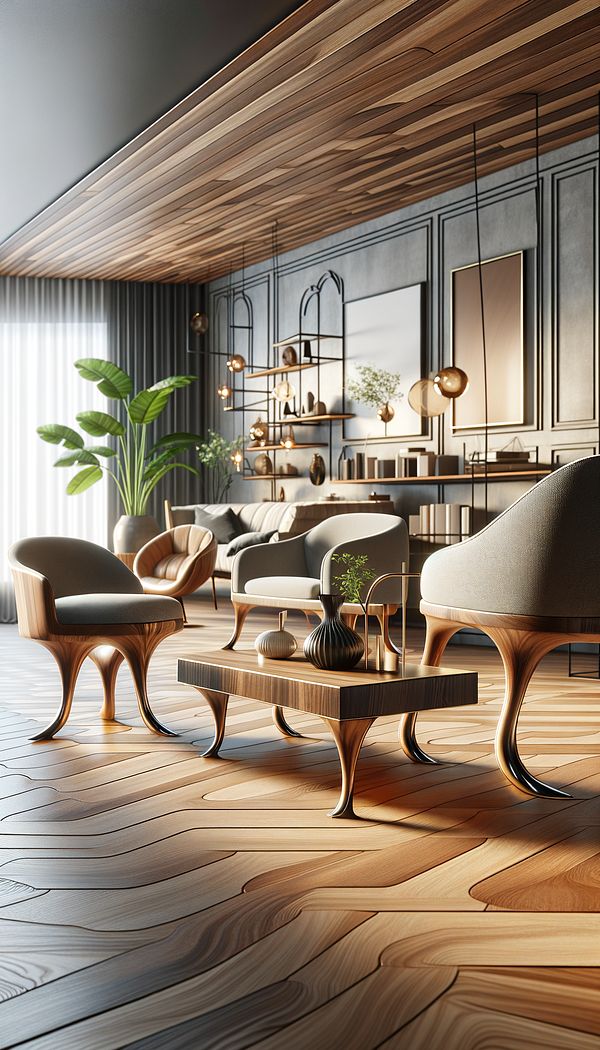What is Spade Foot?
Spade Foot refers to a style of furniture leg that resembles the shape of a spade.
Description
In the world of interior design and furniture making, the Spade Foot is a distinctive and often sought-after style of furniture leg. Its name comes from its resemblance to the shape of a gardening spade, with a flat, slightly widening base that tapers to a more narrow top. This style provides a touch of elegance and sophistication to furniture pieces, often found in both traditional and contemporary styles.
The Spade Foot can vary in detail depending on the period or style it is emulating or complementing. In historic periods, such as the neoclassical era, it was commonly found in refined and elaborate designs, often carved or decorated to match the piece's overall aesthetic. In more modern renditions, it might be simplified, focusing on clean lines and a minimalist aesthetic. Regardless of the specific design, a Spade Foot adds a level of detail and interest that can elevate the look of a piece of furniture.
Understanding the significance of different furniture leg styles, such as the Spade Foot, can help interior designers and enthusiasts make better design decisions. It allows for a more informed selection process, ensuring that every element of a room’s design cohesively works together.
Usage
Spade Foot legs are commonly found on a variety of furniture pieces including chairs, tables, sofas, and cabinets. This style of leg can be seen in both antique collections and modern designs, highlighting its versatility in fitting with diverse interior styles. It is often chosen for pieces that aim for a balance between elegance and stability, making it a popular choice for both design styles ranging from classical to contemporary.
FAQs
-
Is the Spade Foot style appropriate for contemporary interiors?
Yes, while the Spade Foot has historical origins, its simple yet elegant form can complement contemporary design styles exceptionally well. Modern interpretations of the Spade Foot often feature cleaner lines and less ornamentation, making them suitable for minimalist and contemporary interiors.
-
How do I maintain furniture with Spade Foot legs?
Maintaining furniture with Spade Foot legs is similar to caring for any quality furniture piece. Regular dusting to prevent buildup, using coasters to protect from water stains, and avoiding placing heavy items on top that could stress the legs are all good practices. For wooden Spade Foot legs, occasional polishing with a suitable wood cleaner can preserve their appearance.
-
Can Spade Foot legs support heavy furniture?
Yes, when properly designed and constructed, Spade Foot legs can support heavy furniture pieces. The key is in the quality of craftsmanship and the material used. Solid wood or metal legs, for instance, offer substantial support, making them ideal for heavier items like large tables or armoires.
Practical Application
If you're considering incorporating Spade Foot legs into your next furniture selection, take into account the overall style and era of your room. A Spade Foot can add a refined touch to many spaces, but ensuring that it complements the rest of your furniture and decor is essential. When choosing pieces for a historically inspired room, look for Spade Foot styles with more intricate details or carvings. For a modern space, seek out simpler, cleaner-lined options. Remember, the devil is in the details, and the right choice can significantly enhance your interior's aesthetics.
-
Design Styles478 articles
-
Furniture Types599 articles
-
Fabrication & Craftsmanship133 articles
-
Decorating Principles & Elements330 articles
-
Hitchcock ChairA piece of American furniture characterized by its painted finish, stenciled decorations, and rush or caned seat.
-
Dust CoverA dust cover is a protective fabric lining attached to the underside of furniture.
-
Bedding EnsembleA bedding ensemble is a complete set of bedding items designed to match or coordinate.
-
Cushion DrawerA cushion drawer is a drawer that features a built-in cushion or pad, enhancing comfort and functionality.
-
Color SchemeA color scheme is an intentional selection of colors used in design for aesthetics and practical purposes.
